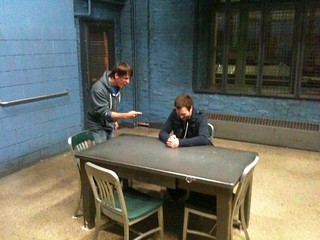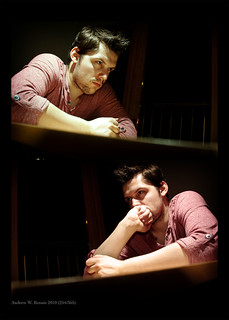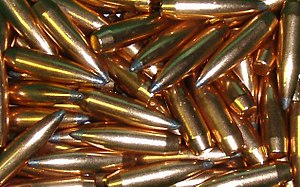room-by-room.
Home Invasion -
* Happens while someone is home.
* A criminal who is coming into your home
at night will assume that there is going to be a confrontation.
* Confrontations are to be avoided when possible. So it is important
to be a HARD TARGET.
* Reason they might choose a home invasion:
`Their plan may be to get someone to open safes or give pin
numbers.
`They plan a rape
`They plan to inflict harm/kill the people inside
Being a hard v soft target
* Lock your solid-core doors with quality
locking systems.
* Drill peep holes at your level and the
children's level so they can see who is
there, too.
* Lock your windows on all levels of the
house not just the ground floor.
* Plant thorny bushes under your windows -
and trim other bushes so that the criminal
can not use them as a shield to hide behind.
* Motion detection lighting covering the
whole yard.
* Dogs
* Consider a security system especially one
that includes cameras. But if you can't afford a whole house
system that is monitored, you can purchase the stickers and yard
signs to put up. There are also portable alarms, designed for hotel
stays, that are very inexpensive and can be used where alarms are
not allowed (a dorm room, and apartment).
Remember noise and light make you a hard target. dark and
quiet make you an easy target. Link - this link takes you to a
security store so that you can see the wide range of options.
(not an endorsement)
* A safe room set up.
`Simply a designated area to retreat to in an emergency.
`The children are taught to go there.
`The hinges are placed so the door swings out.
` Some things that you might include:
A land line phone.
Water
Weapons
Fire extinguisher
Escape rope ladder
Flashlight
Our Home Invasion Stories:
Rock-
I was a young boy before my teenage years, my dad worked a shift system. My mom hated the night shift. At certain times when my dad was at work, someone would ring the front door bell or bang on the front door. As my mom went to answer the door, someone would climb over the rear wall and bang on the back door. When my mom went to the back, the front door bell would chime again and so on. This went on for quite some time. The local police were unable to catch whoever it was, and the neighbors never saw anything.
My mom took to sleeping with a large carving knife under her pillow. My younger brother and I had no idea what was going on. Would I have liked to have been forewarned of events? Yes, definitely. Anyway, one night, my mom had had enough. When the front door bell rang (remember this is in the early hours so no one was coming round for a visit), she went to the front door and waited. When the back door was banged, she waited by the front door with the nib off so the door was open. On the next ring, she threw open the door; with knife in hand she lunged. The guy had already taken a couple of steps back, and as he was confronted by a screaming woman wielding a blade, he legged it and would have been an Olympic sprint champion according to my mom.
They never did come back after that and were never caught. When I learned of this story from my parents years later I asked my mom what she would have done that night, ‘I would have killed them’ she said and left it at that.
Are you trained in the weapons you have and are you mentally prepared to kill if it comes to that?
Fiona -
One day, I was home with my four small children when the bell rang. I went to the door and looked through the peep hole to find a man in a phone company uniform. I went to the window and saw that there was a company vehicle parked in front of my house. This was odd because we weren't having an issue with our phone.
So I called through the door, "May I help you?"
"I'm here to fix the phone line..."
My radar was up - something wasn't right. "We're fine. No issues with the phone. Thank you, anyway."
He explained to me that it was my husband who had called, and he told me my husband's name. My instinct was that something was not right. I used my cell phone to call hubby to ask him what the issue was with the phone. My husband explained that he had switched our phone service, and we didn't even use that company anymore. My next call was to the police. I yelled through the door that the guy should get off my property, and he started kicking the door in, cursing at me, and ordering me to let him in. I had one of my children go press the panic button on our alarm. With the sirens wailing and whole house flashing red lights, I announced that the police were en route, and I had my gun aimed at the door, one more kick and I would shoot. He sprinted away, and the police congratulated me on not becoming a statistic.
So here I would caution you to (or if you are writing this into a scene, then apply this to your character) premeditate a strategy. Know the applicable laws in the area you are staying and make decisions. Many of my friends will say, "I'd rather face 12 than be carried by six." My plan: I walk away, and my family is safe.
So Rock, what sparked this whole blog article for us was the story of the home invasion where the mother protected her family by firing at (and missing) the three teens who kicked in her door. Can you talk a little bit about guns and home safety?
Firearms and Home Defense
Rock -
Fiona has done a great piece on choosing a firearm for a heroine in a novel, and you can see it here: Choosing a handgun link.
There is an inordinate amount of literature on firearms for home defense: rifle, shotgun, pistol. With the amount of choices, how do you really decide what is right for you? Well let me say this from the start, stick with a pistol, or a short barreled pump action shotgun at the most. Why? Well the tactics and the training to use a ‘Long’ effectively is
far more complicated than using a ‘Short’.
In this post I am going to ask more questions than give advice. This is because I do not know your circumstances. It’s your life, your home, your family. I can help point you in the right direction with questions you can answer.
Before you purchase your firearm get down the range and have a go with a few different types. Your hand size, strength and where you live (I will explain this a little later) all have an effect on the weapon of your choice. Also, take into consideration weak hand drills, that’s your none dominant hand, the weapon should feel comfortable for use in both hands with mechanisms that suit both dominant and none dominant hand firing.
But as you will see you may need to purchase two weapons, one for home defense and one for personal defense while out of the home.
Once you have chosen your weapon and are comfortable firing it on the range, the next step is to plan how you are going to defend your home.
Where you live will have some way to go in your weapon of choice and the rounds you use. Do you live in a block of flats, a house on a street, a semi or detached house?
What are the walls like in your house, solid brick, plaster board, wooden or other? I ask this because if you live in a block of flats with thin walls, you don’t want a round hitting your next door neighbor while they are reading Virginia is for Mysteries, do you? LINK
So two firearms: home defense may need .22 or a subsonic frangible round where as a CCW (concealed carry weapon) would employ a standard round for your weapon of choice. Bullet turorial
I have planned homes and night clubs for violent encounters. Why? Most home invasions happen at night and night clubs are dimly lit.
What is the first thing most people do on hearing a noise either outside, downstairs or in another room? You guessed it. They put the light on. This has now put the home owner on an equal footing with the intruder. You must get used to fighting in the dark. In the house it may be pitch black, or there may be ambient light coming in from outside. Either way, this is where the combat must take place, here you have the advantage.
When planning on low light combat, here you will also have to think about any attachments for your weapon:
* Torch (flashlight)? Not a good idea in my book. Remember you want the advantage, giving away your
position is not having an advantage.
* Laser dot light? Good if trigger activated, and you are already on target.
Your home must be planned with combat in mind.
* Can you move around your house in the dark without tripping
over furniture, kids toys, cats or dogs? You should be able to.
Fiona - Gosh Rock, and here I've been using the kid debris to make us a hard target. There's no way you could steal quietly through the room - and the thousands of lego pieces and marbles are special bonuses.
Rock - Yes, toys make great noise traps when placed at points of entry.
* Can your partner or kids move around in the dark to a safe room or escape from the home?
* Do you have a plan for where you should meet up to count heads
in any emergency be it a home invasion or fire? Not next door for
obvious reasons.
* What about those who either don’t like guns or live, as I do,
where firearms are illegal? Well you are going to have to train in
other weapons, knives, sticks, batons... Weapons can be placed
around the home either as ornaments or as purposefully located
weapons.
Fiona -
Ha! Don't break in at Rock's house. It will go badly for you. Here's hoping you all stay safe and sound.
Thank you so much for stopping by. And thank you for your support. When you buy my books, you make it possible for me to continue to bring you helpful articles and keep ThrillWriting free and accessible to all.
DISCLAIMER - This is a non-political site that is geared to help writers write it right, presenting information to help develop fictional characters and fictional scenes. In no way are we advocating any position or personal decision.


























.jpg)









